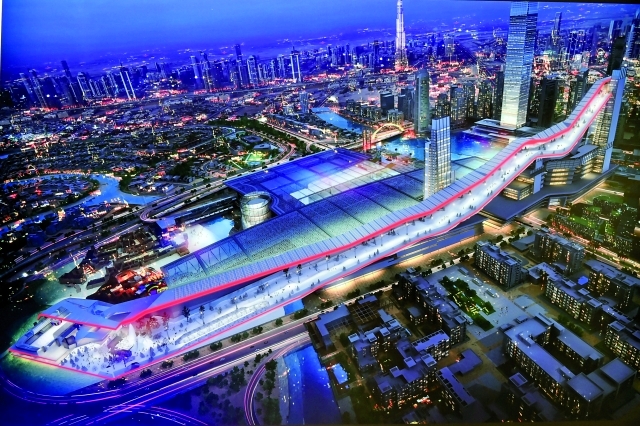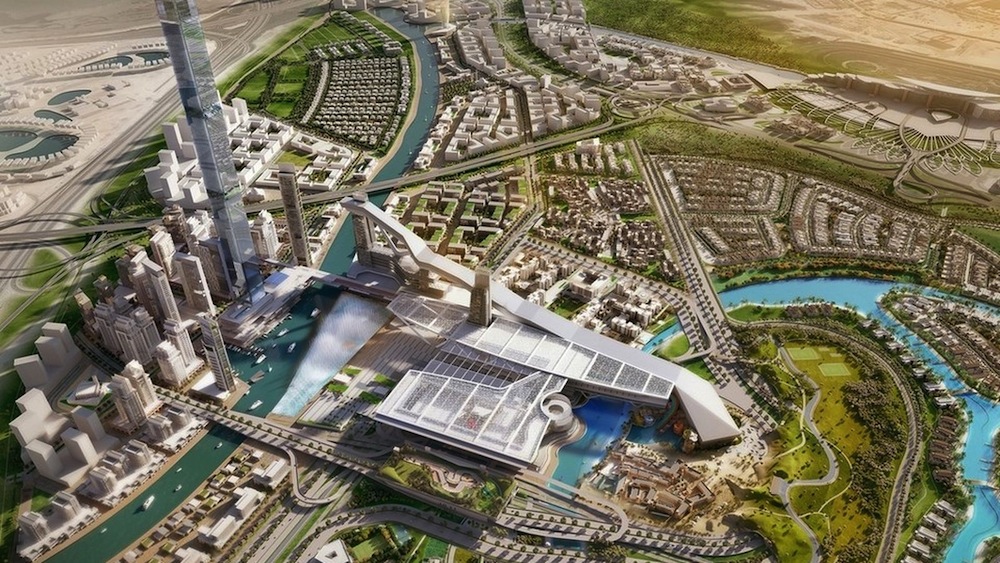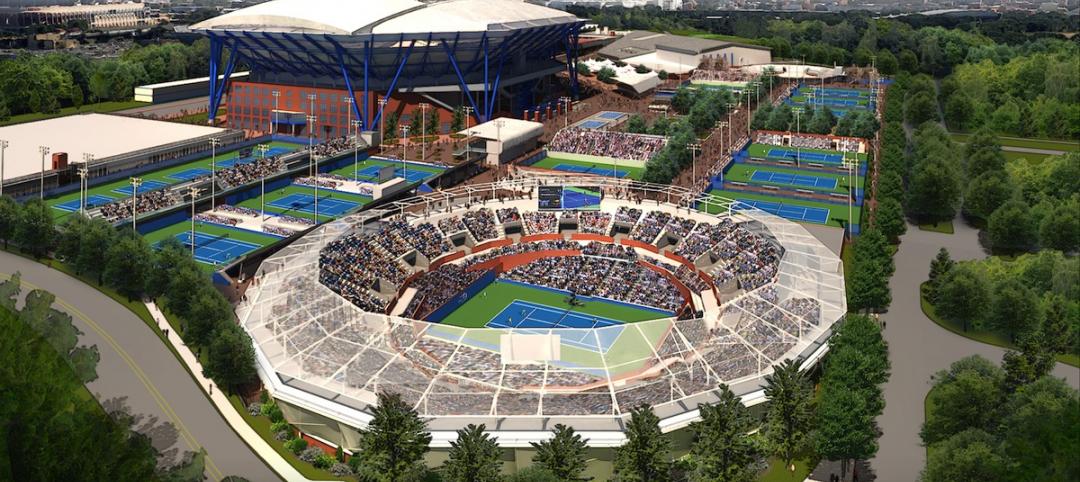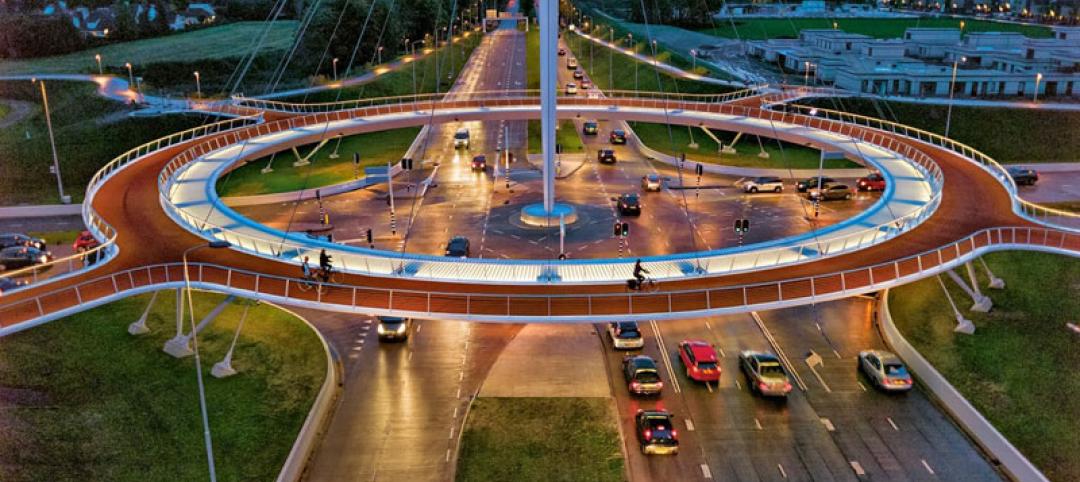The words “skiing” and “desert” aren’t often used in the same sentence. But that’s changing in Dubai, which appears to be on a mission to have the “biggest” of everything, including extravagant shopping malls, towers, and, now, ski slopes.
Gulf News reports that the oil-rich country is planning a project that will cover 3.67 million sm (39.5 million sf) and include a shopping mall, civic plaza, a 4-kilometer canal, a marina with 100 boat slots, and what’s being touted as the world’s longest indoor ski slope.
The developer, Meydan City Corporation, states that this project should be completed before 2020, the year that Dubai hosts the World Expo 2020. While the developer didn’t disclose what this project might cost, The Guardian reports estimates of up to 25 billion dirhams (about $6.8 billion).
The Dubai newspaper Al-Bayan reports that this project would extend from the Meydan racetrack to Burj Khalifa, the world’s tallest tower.
The shopping mall component of this project, called Meydan One Mall, alone will cover 25,000 sm (269,000 sf), and include a retractable roof measuring 150 x 80 meters. The mall will be adjacent to the 1.2-kilometer (4,922-foot) long ski slope. (The Emirate already holds the record for the largest indoor ski slope, at 400 meters long, which runs year-round inside the Mall of the Emirates, according to The Guardian.)
At the base of the ski slope will be 25,000-sm Meydan Arena, which will seat up to 8,000 people, and could be used for a variety of sporting contests and live shows.
This project also includes the construction of The Dubai One, a 711-sm-tall building that would be the tallest residential tower in the world. It will have 885 apartments and a five-star hotel with 350 rooms, as well as a conference center, a 655-meter observation deck, and skytop restaurant.
Residents and visitors will be able to avail themselves of more than 5.3 kilometers of bicycle and hogging trails, a 300-meter-long beach, and a heritage village that could house up to 78,000 people. The project will also feature a 420-meter-long “dancing” fountain, also said to be the world’s largest.

Related Stories
| Apr 2, 2014
8 tips for avoiding thermal bridges in window applications
Aligning thermal breaks and applying air barriers are among the top design and installation tricks recommended by building enclosure experts.
| Mar 26, 2014
Callison launches sustainable design tool with 84 proven strategies
Hybrid ventilation, nighttime cooling, and fuel cell technology are among the dozens of sustainable design techniques profiled by Callison on its new website, Matrix.Callison.com.
| Mar 25, 2014
Sydney breaks ground on its version of the High Line elevated park [slideshow]
The 500-meter-long park will feature bike paths, study pods, and outdoor workspaces.
| Mar 20, 2014
Common EIFS failures, and how to prevent them
Poor workmanship, impact damage, building movement, and incompatible or unsound substrate are among the major culprits of EIFS problems.
| Mar 13, 2014
Do you really 'always turn right'?
The first visitor center we designed was the Ernest F. Coe Visitor Center for the Everglades National Park in 1993. I remember it well for a variety of reasons, not the least of which was the ongoing dialogue we had with our retail consultant. He insisted that the gift shop be located on the right as one exited the visitor center because people “always turn right.”
| Mar 12, 2014
14 new ideas for doors and door hardware
From a high-tech classroom lockdown system to an impact-resistant wide-stile door line, BD+C editors present a collection of door and door hardware innovations.
| Feb 26, 2014
Billie Jean King National Tennis Center serving up three-phase expansion
The project includes the construction of two new stadiums and a retractable roof over the existing Arthur Ashe Stadium.
| Feb 14, 2014
First look: Kentucky's Rupp Arena to get re-clad as part of $310M makeover
Rupp Arena will get a 40-foot high glass façade and a new concourse, but will retain many of its iconic design elements.
| Feb 14, 2014
Crowdsourced Placemaking: How people will help shape architecture
The rise of mobile devices and social media, coupled with the use of advanced survey tools and interactive mapping apps, has created a powerful conduit through which Building Teams can capture real-time data on the public. For the first time, the masses can have a real say in how the built environment around them is formed—that is, if Building Teams are willing to listen.
| Feb 11, 2014
World's first suspended bicycle roundabout [slideshow]
Located in the Netherlands, the project was designed to promote a healthier lifestyle.

















